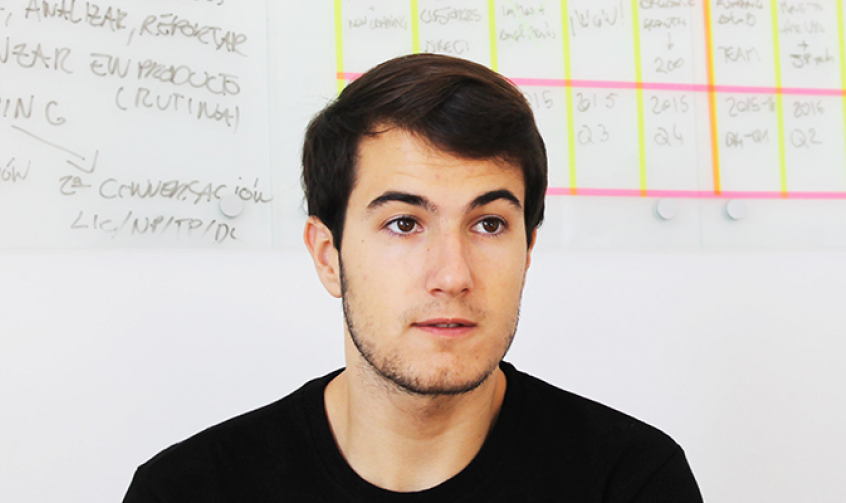"While Bitcoin struggles to take off in the currency market, its blockchain technology is generating a disruptive tidal wave in different, non-financial sectors. Two years ago, Luis Cuende identified this opportunity and founded Stampery, a company which uses blockchain technology to certify any digital document, thereby acting as a 21st century notary public. This endeavor has led to his recognition as one of MIT Technology Review, Spanish Edition's Innovators Under 35 Spain 2016.
Cuende entered the technological entrepreneurial scene at an early. In 2008, when he was just 12 years old, he founded Asturix, an association dedicated to open software which taught him that ""it is difficult to direct a collaborative project when there are no economic interests at play,"" he recalls. Therefore, when he proposed to launch what would be his seventh venture, the first thing he did was to conduct a study of the business areas which would benefit.
""Blockchain is a distributed database that requires the consent of the majority of nodes in order to register a new block within the chain,"" Cuende explains. Once a new block is accepted, it is impossible to modify it without anyone noticing. Bitcoin uses this register to certify transactions, but the mechanism can be used to validate any other type of document, just as a notary public would do, but more securely.
""A notary public certifies a document that he or she registers later, but this document can be modified, intentionally or accidentally and the record is lost. With Stampery this cannot happen,"" Cuende maintains. Substituting notary publics would require more than just technology, since their services are protected by specific laws, but Cuende is confident that someday this will come to pass.
Stampery offers two types of services: Stamp.io, which is free of charge, allows anyone to certify the existence and ownership of any document or file, and a paid version for companies which improves the security of their computerized data. ""A case like Edward Snowden could not have happened if the NSA had used a blockchain technology to register the access and modifications to their computer systems,"" Cuende points out. He also identified that Stampery could be useful in the patents and intellectual property sector. And he realized this precisely when he was attempting to patent his product and discovered firsthand ""the patent troll phenomenon"" and the ""innovation tax involved in fighting absurd patent claims,"" the young entrepreneur explains. Thus was born the idea for his next project, UnPatent, a crowdsourcing platform directed at fighting these trolls.
Cuende's project is one of ""the few projects worldwide which are leveraging and commercially exploiting the use of Bitcoin´s blockchain network,"" according to the innovation and digital transformation consultant at GFT Ignasi Barri. According to this jury member for the Innovators Under 25 Spain 2016 awards, Cuende has also ""added better technologies which circumvent the technology's intrinsic scalability problems."" In his opinion, ""it is without a doubt a very promising idea,"" and Cuende is ""an entrepreneur which we will hear much about in the upcoming years."""




